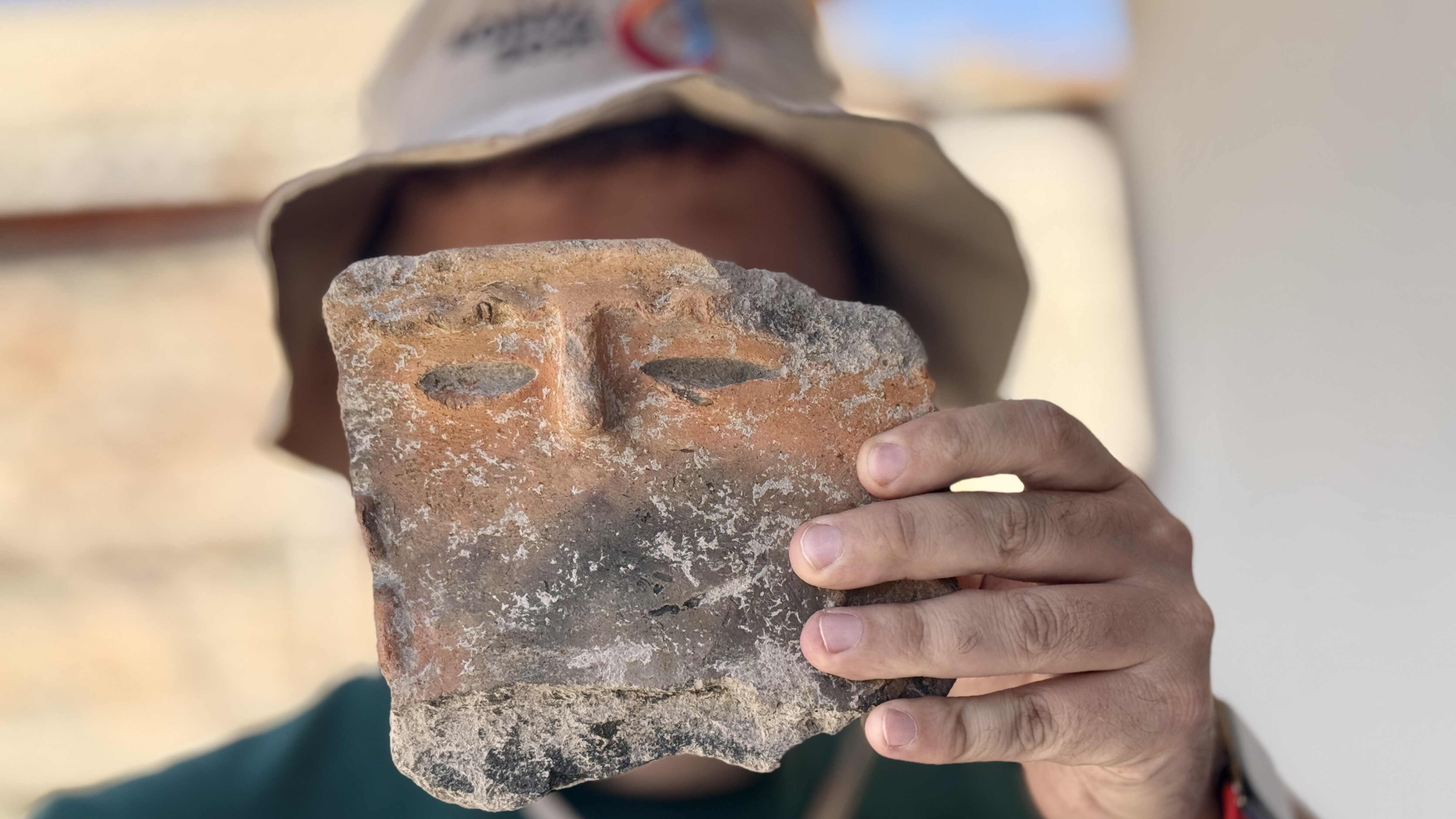
Archaeologists in Konya’s Seydişehir district have uncovered a pottery fragment featuring a human face believed to date back approximately 5,000 years during excavations at Gökhöyük.
Located 8 kilometers from the district center, the 5-hectare Gökhöyük mound was first identified in the 1950s by British archaeologist James Mellaart. Rescue excavations were carried out by the Konya Museum Directorate between 2002 and 2005 after the State Hydraulic Works halted earth removal during a 2002 irrigation project that unearthed archaeological finds.
After years of interruption, excavations resumed in 2023 under the supervision of Associate Professor Ramazan Gündüz, head of the Prehistory Department at Selçuk University’s Archaeology Faculty.
Gökhöyük offers a unique window into life on the Konya Plain from roughly 7,000 to 1,000 B.C. In the third year of renewed excavations, archaeologists discovered several remarkable artifacts, including animal figurines, seals, obsidian arrowheads and stone axes. Among these, the pottery shard with a detailed human face stands out.
Gündüz explained that initial excavations had revealed a settlement dating to the Iron Age. With the expanded excavation area, older finds have emerged, showing that Gökhöyük was continuously inhabited for thousands of years.
“Gökhöyük inhabitants placed great importance on symbolism, as we can see from various depictions on the ceramics,” Gündüz said. “One of these is a human representation. The shard we uncovered shows facial features — eyebrows, nose and almond-shaped eyes — sculpted in detail. The eyebrows curve from the rim of the vessel and meet in the center with the nose. The eyes sit on either side. The design was carved while the vessel was still being shaped. Depictions of human faces on ceramics were common in Early Bronze Age sites in western Anatolia and appear in other regions of Central Anatolia as well. But there is no comparable well-preserved example in this area," he added.
"Gökhöyük people did not use ceramic vessels solely for cooking; they imbued them with symbolic meaning, likely for rituals. This shard probably belonged to a ceremonial vessel. While we do not yet know the exact nature of the ceremonies, it is certain that the vessel was used for ritual purposes. Based on initial observations, the human-faced shard is roughly 5,000 years old. Its precise dating will be determined through radiocarbon analysis at Selçuk University,” he said.
Speaking of the other notable finds uncovered during the excavations, Gündüz stated, “Obsidian tips were attached to spears or arrows and served as effective hunting tools. We also found small stone axes dating back to the Neolithic and Chalcolithic periods, essentially forming a set of tools for everyday use.”
Gündüz emphasized that Gökhöyük stands out as the only site on the Konya Plain where a continuous sequence from the Neolithic to the Iron Age, covering some 7,000 years, can be observed. He added that ongoing excavations are expected to establish Gökhöyük as a major center for research into Anatolia’s prehistoric history.